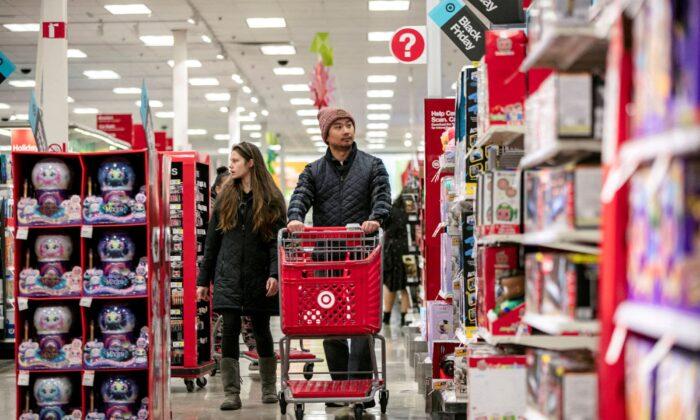Commentary
With any looming recession, household debt is one of the clearest indicators of its severity.
Unlike the 2008 crisis, household debt is mostly manageable this time, but the picture worsens as inflation remains high.
A burgeoning but often overlooked source of household debt resides in “buy now, pay later” (BNPL) apps.
These apps fall within the realm of “fintech” and generally aren’t run by banks—with all of the regulatory reporting that comes with being a bank—so their magnitude and impact have been hard to measure.
BNPL apps include Klarna, Affirm, Afterpay, and PayPal. And new services are entering the field weekly.
How do these apps work?
Like a credit card, the consumer can pay for a purchase later. After a down payment, the BNPL app will charge the consumer the rest of the purchase in equal installments that typically last no more than a few months. Unlike credit cards, BNPL apps usually do not charge interest, and there is no credit report hard pull, unless the customer defaults on or misses payments.
And unlike credit cards and personal loans from banks, BNPL apps are very easy to get approval for and do not come with high-interest rates.
But, like credit cards and loans, it’s another way to get into debt.
Consumer Financial Protection Bureau (CFPB) data found that BNPL apps rose to prominence during the COVID-19 pandemic, with more than $24 billion of such installment loans originated by U.S.-based lenders in 2021. The BNPL market today is a $132 billion sector that could grow to $3.5 trillion by 2023, according to research from Straits Research. The majority of the users appear to be Gen Z consumers.
The BNPL apps were popular for big-ticket purchases, such as electronics and appliances. But as inflation continues to take its toll on consumers, Americans are increasingly turning to these apps and taking on additional debt burden to buy groceries and other everyday items.
Data from Adobe Analytics show that online sales using BNPL apps rose 27 percent in 2022. In the first two months of 2023, revenues increased another 10 percent. The type of purchases was also eye-opening, as the share of BNPL usage on grocery purchases jumped 40 percent during the first two months of this year.
It doesn’t help that banks, retailers, and corporations are increasingly pushing BNPL apps to boost sales in a floundering economy.
Industry research shows that credit card usage isn’t expected to grow very much. So retailers are rushing o integrate fintech solutions, such as BNPL platforms. And that’s especially important for retailers, given the importance of BNPL to Gen Z shoppers.
And that has sent valuations of BNPL startups to nosebleed levels. Sweden-based BNPL app Klarna, in a mid-2022 fundraising round, was valued at more than $6 billion. While that’s a high valuation, it still pales to the $46 billion valuation attached to the firm from a 2021 SoftBank fundraising.
The BNPL market has been so hot that even Apple has jumped into the fray. In late March, Apple announced its own BNPL app called Apple Pay Later, allowing consumers to split purchases made using Apple Pay into six weekly interest-free installments. Loans of up to $1,000 can be approved on purchases made with Apple Pay on iPhones and iPads.
So does BNPL help or hinder?
The CFPB states that these apps are “engineered to encourage consumers to purchase more and borrow more. As a result, borrowers can easily end up taking out several loans within a short time frame at multiple lenders or Buy Now, Pay Later debts may have effects on other debts.”
“BNPL borrowers have lower liquidity and savings on average compared to consumers who did not use BNPL,” according to a March 2023 CFPB report on BNPL apps. And “BNPL borrowers exhibit measures of financial distress that are statistically significantly higher than non-users.”
So these apps are being used by consumers already in debt or financial distress.Last year, consumers added more than $1 trillion of household debt, an increase not seen in more than a decade, according to data from Experian. Those amounts include mortgages, student loans, auto loans, credit cards, and personal loans.
Debt from BNPL apps didn’t even figure into those amounts. The nascent BNPL fintech industry is just another way for already over-levered Americans to go further into debt.





